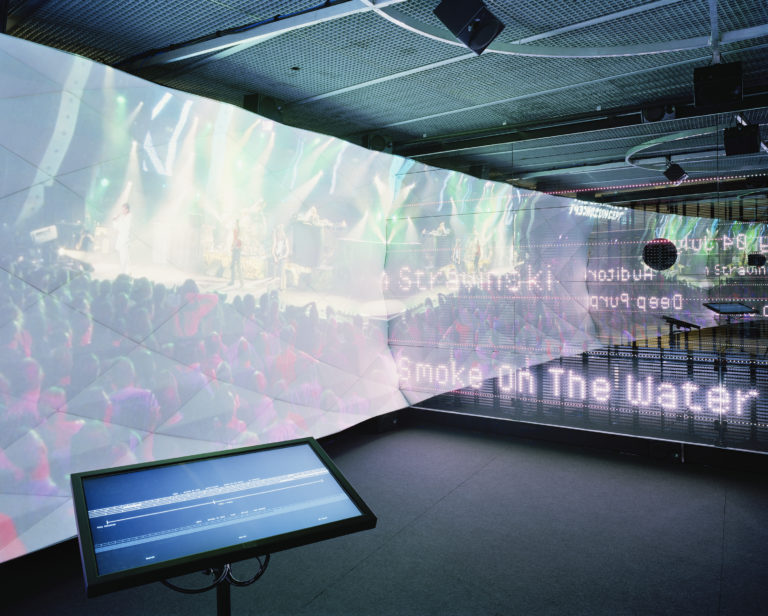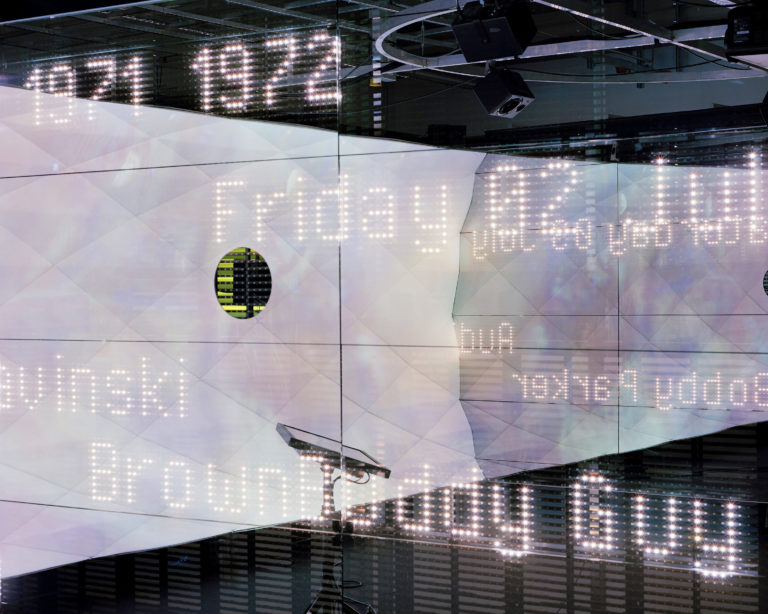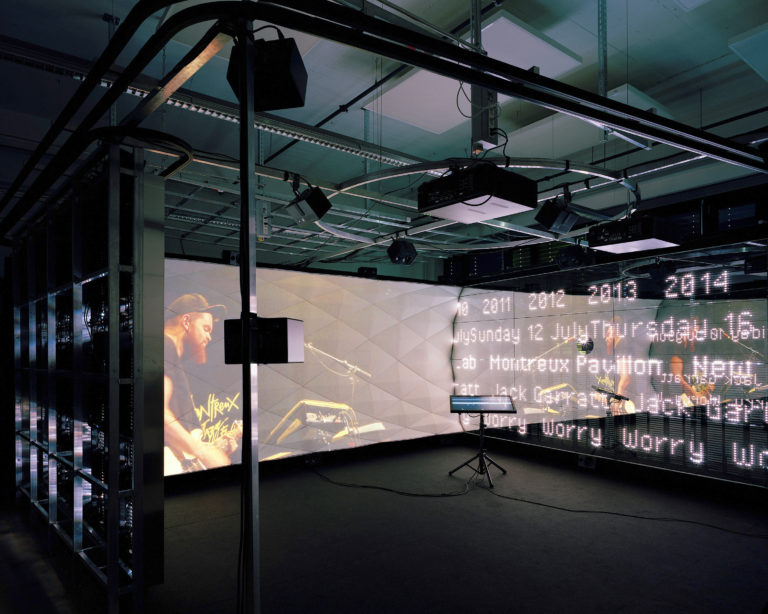Montreux Jazz Heritage Lab II
The world’s largest audiovisual archives of blues, jazz and rock live recordings are not only listed in the UNESCO Memory of the World Register, they have also now been digitized. Eight years of work under the coordination of the Metamedia Center at the EPFL, technological development and scientific research have transformed the original material into an information system. But how to revive these archives? Research conducted by the EPFL+ECAL Lab in close collaboration with ALICE (EPFL’s Architectural Space Conception Laboratory) set out to create a unique, specific experience, rather than mimicking the past.
Several principles guided the EPFL+ECAL Lab and ALICE in this proposition. First, to enhance immersion. The side walls of the space are made up of mirrors which reflect the central image. The space seems to expand and the concert grows. The immersion is strengthened by the display of additional information on music, iconic visuals and anecdotes revealing the festival’s history and unique identity.
Sound acts also as a key factor for the immersion, involving EPFL research labs and innovative companies. The installation includes 3D sounds with full virtual reconstruction of Montreux Jazz old venues.
The simple yet sophisticated geometry of the installation is also key to the experience. The screen is a torus segment offering a variety of views to visitors from inside and outside the building. ALICE’S screen design enhances proximity to the stage by creating a sense of depth. Its physical texture improves the perception of the old standards, gives a tangible physical existence of the screen and contributes to the overall acoustic performance.
Finally, the browsing system helps to create an overview of the archive’s rich content. Over 44,000 songs are at the users’ fingertips with a design reminiscent of a music score.
The Montreux Jazz Heritage Lab II has been open to the public at the Montreux Jazz Café at EPFL since 2016.
EPFL+ECAL LAB
Direction
Project Management & Engineering Lead
Design Lead
Research Assistant & UI Design
Senior Computer Scientists
Delphine Ribes, Guillaume Bonnier
Software Engineering
Product Design
ALICE EPFL
Architecture Curator
Pr Dieter Dietz
Senior Research Architect
Architect
Manon Fantini
Assistants
Yannick Claessens, Javier Puchalt
METAMEDIA CENTER
Operations and Development Manager
Alain Dufaux
IT Manager, Project Coordinator, Digitization
Igor Ristic
Senior Developer, Database
Olivier Bruchez
Senior Developer, Media File Manager
Gregory Marti
Documentalist, Song Indexing
Sarah Artacho
Technology Watcher, Quality Control
Caryl Jones
Archivist, Picture Digitization & Anecdote Creation
Julien A. Raemy
Archivist, Picture Digitization & Tagging
Céline Racine
3D SOUND
Acoustic Scientists
Dirk Schröder, Sönke Pelzer, Fabian Knauber
Photography Credits
© EPFL+ECAL Lab / Joël Tettamanti





